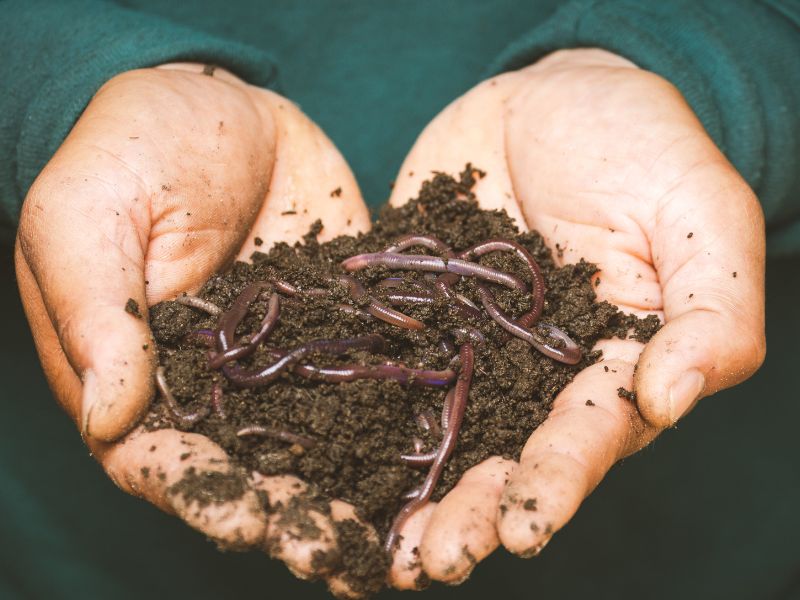Innovative Methods in Red Wiggler Composting to Enhance Your Plant food
Innovative Methods in Red Wiggler Composting to Enhance Your Plant food
Blog Article
Comprehending the Perks of Red Wiggler Composting: How This Efficient Technique Changes Organic Waste Into Nutrient-Rich Dirt Modifications
Red Wiggler composting, employing the species Eisenia fetida, offers an engaging method to organic waste administration, transforming cooking area scraps and lawn debris into important soil changes. This method not only boosts soil fertility however additionally addresses pressing environmental concerns, consisting of garbage dump waste reduction and greenhouse gas emissions.
What Are Red Wigglers?
Red wigglers, clinically referred to as Eisenia fetida, are a types of earthworm that play a crucial duty in vermicomposting systems. These worms are defined by their reddish-brown shade, segmented bodies, and an unique ability to thrive in organic-rich settings, making them suitable for composting applications - Red Wiggler Composting. Unlike their garden-dwelling equivalents, red wigglers choose to occupy the top layers of dirt, where rotting issue is plentiful
Generally measuring between 3 to 4 inches in length, red wigglers have a high reproductive rate, enabling them to increase quickly under optimal problems. They possess a distinct digestion system that permits them to process natural waste efficiently, transforming it right into nutrient-rich spreadings, which are very valuable for plant growth.
Their resistance to varying dampness levels and temperature level ranges additionally improves their energy in vermicomposting setups, making them a popular option amongst composting fanatics. In addition, red wigglers are cardio organisms, which requires a well-aerated composting environment, ensuring efficient decomposition. Recognizing the organic qualities and actions of red wigglers is necessary for optimizing their usage in sustainable waste management methods.

Benefits of Vermicomposting
Using the power of vermicomposting offers a multitude of agricultural and ecological advantages. To start with, it significantly reduces organic waste in garbage dumps, therefore lessening methane discharges, a potent greenhouse gas. By drawing away food scraps and yard waste to vermicomposting, we support an even more lasting waste monitoring system.
In addition, vermicomposting boosts dirt health. The castings produced by red wigglers are abundant in crucial nutrients, microbes, and enzymes, enhancing soil structure and fertility. This nutrient-rich amendment advertises robust plant development and increases water retention, lowering the requirement for chemical plant foods.
Additionally, vermicomposting fosters biodiversity in the soil ecosystem. The introduction of beneficial bacteria from worm castings help in illness suppression and nutrient biking, developing a much healthier atmosphere for plants.
Financially, vermicomposting reduces the expenses related to chemical inputs and waste disposal. Farmers and gardeners can cultivate high-quality produce at lower costs, adding to food security and sustainability.
Just How to Begin Composting
Beginning a composting venture can be a uncomplicated and satisfying procedure. To begin, select a suitable place that is well-drained and obtains partial sunlight. This will certainly aid maintain a balanced temperature, important for the composting procedure. Next, select a compost container or create a designated location in your garden, ensuring it is easily obtainable for including materials and gathering garden compost.
Collect organic materials such as kitchen area scraps, yard waste, and shredded paper. Objective for a well balanced mix of 'green' products, high in nitrogen (e.g., fruit scraps, coffee grounds), and 'brownish' products, abundant in carbon (e.g., dried fallen leaves, cardboard) A ratio of roughly 2:1 environment-friendly to brown products is ideal.
Beginning layering your products, making certain appropriate air blood circulation by turning the heap regularly. This advertises cardiovascular decomposition, speeding up and decreasing odors up the process. Monitor dampness degrees; the compost ought to feel like a moist sponge yet not excessively damp.
Nutrient Profile of Vermicompost
Composting, specifically with red wigglers, generates a nutrient-rich item called vermicompost. This organic amendment is differentiated by its high focus of crucial nutrients, making it a vital source for gardening and farming. Vermicompost normally contains elevated degrees of macronutrients such here as nitrogen, potassium, and phosphorus, which are important for plant development. In addition, it gives trace elements like magnesium, calcium, and iron, cultivating robust plant growth and improving dirt health.
The microbial activity existing in vermicompost additionally the original source enhances its profile, presenting helpful bacteria and fungis that promote nutrition accessibility and uptake in plants. This biological component help in suppressing plant conditions and boosting dirt structure, resulting in boosted water retention and aeration.

Ecological Impact of Composting
The environmental impact of composting, especially with using red wigglers, is extensive and multifaceted. This method substantially reduces the quantity of organic waste sent to land fills, which in turn lessens greenhouse gas discharges, specifically methane-- a potent contributor to environment change. By diverting organic products from garbage dumps, red wiggler composting not only assists alleviate ecological destruction but likewise advertises lasting waste management techniques.

Moreover, composting adds to carbon sequestration, as the procedure captures co2 from the environment and shops it in the dirt. This all-natural procedure help in combating climate change while improving the soil - Red Wiggler Composting. In general, red wiggler composting provides a feasible, green solution for waste monitoring and ecological sustainability, advertising much healthier communities and a more lasting future
Conclusion
In final thought, Red Wiggler composting serves as an efficient method for transforming organic waste right into important dirt modifications. The process not only boosts soil fertility and structure yet likewise reduces environmental problems connected with waste disposal.
Red Wiggler composting, using the species Eisenia fetida, provides a compelling technique to organic waste management, converting kitchen area scraps and yard debris into valuable soil modifications. Unlike their garden-dwelling equivalents, red wigglers prefer to inhabit the top layers of dirt, where decomposing issue is plentiful.
The spreadings produced by red wigglers are abundant in important nutrients, microorganisms, and enzymes, enhancing dirt framework and fertility. The nutrient-rich by-products of red wiggler task improve soil structure, rise water retention, and promote biodiversity within the dirt community.In final thought, Red Wiggler composting offers as a reliable method for converting natural waste into important dirt changes.
Report this page